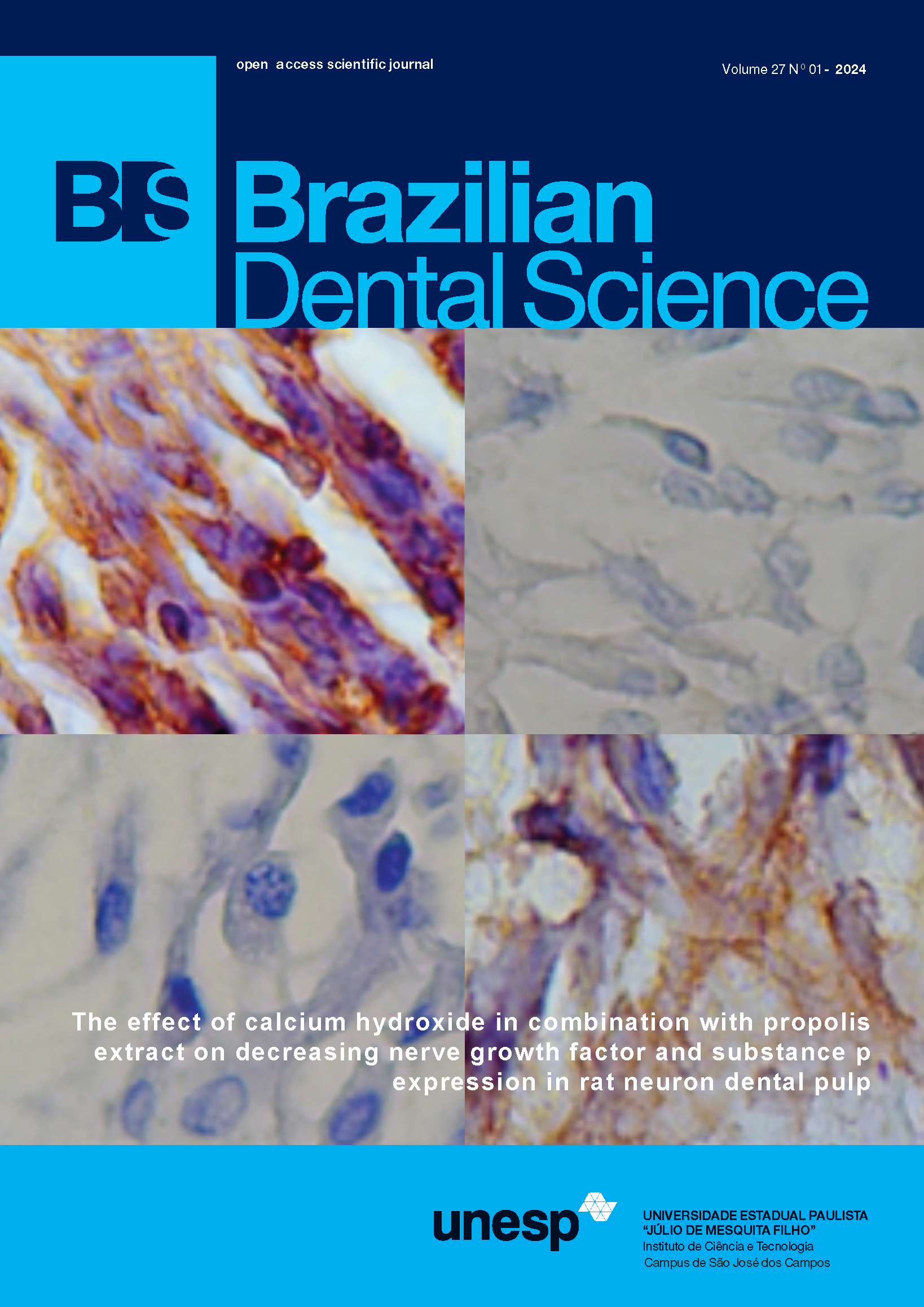Knowledge of Brazilian dentists about bisphosphonate-associated osteonecrosis of the jaw
DOI:
https://doi.org/10.4322/bds.2024.e4125Resumo
Osteonecrosis of the jaw associated with bisphosphonate use is a matter of utmost importance in clinical practice for the safe treatment of patients using this medication. Objective: The aim of this study was to evaluate the level of knowledge of dentists who carry out clinical practice about bisphosphonate-associated jaw osteonecrosis. Material and Methods: The methodology used in the present research consisted of a non-probability sampling approach for the selection of participants. To conduct the study, a questionnaire created on the Google Forms platform was sent via Direct on Instagram to the professionals who agreed to participate. The data were sent for analysis, using the frequency for each response, and the professionals were divided into subcategories according to their time of professional practice. Results: Participants were familiar with the purpose of the medication (65%) or had heard of it (34%); regarding the professionals’ opinion on their knowledge and practice about bisphosphonate-related osteonecrosis a significant percentage (93.24%) responded positively regarding the existence of side effects resulting from the therapeutic use of bisphosphonates and 48.65% self-evaluated their level of knowledge on the subject as insufficient. Conclusion: The study reveals that almost all participating dentists have good knowledge about the effects caused by bisphosphonates, but some of them still do not feel specifically confident about the management and knowledge of jaw osteonecrosis.
KEYWORDS
Bisphosphonate-Associated Osteonecrosis; Bisphosphonates; Jaw; Knowledge; Osteonecrosis.
Downloads
Downloads
Publicado
Como Citar
Edição
Seção
Licença
TRANSFERÊNCIA DE DIREITOS AUTORAIS E DECLARAÇÃO DE RESPONSABILIDADE
Toda a propriedade de direitos autorais do artigo "____________________________________________________________________" é transferido do autor(es) para a CIÊNCIA ODONTOLÓGICA BRASILEIRA, no caso do trabalho ser publicado. O artigo não foi publicado em outro lugar e não foi submetido simultaneamente para publicação em outra revista.
Vimos por meio deste, atestar que trabalho é original e não apresenta dados manipulados, fraude ou plágio. Fizemos contribuição científica significativa para o estudo e estamos cientes dos dados apresentados e de acordo com a versão final do artigo. Assumimos total responsabilidade pelos aspectos éticos do estudo.
Este texto deve ser impresso e assinado por todos os autores. A versão digitalizada deverá ser apresentada como arquivo suplementar durante o processo de submissão.




























